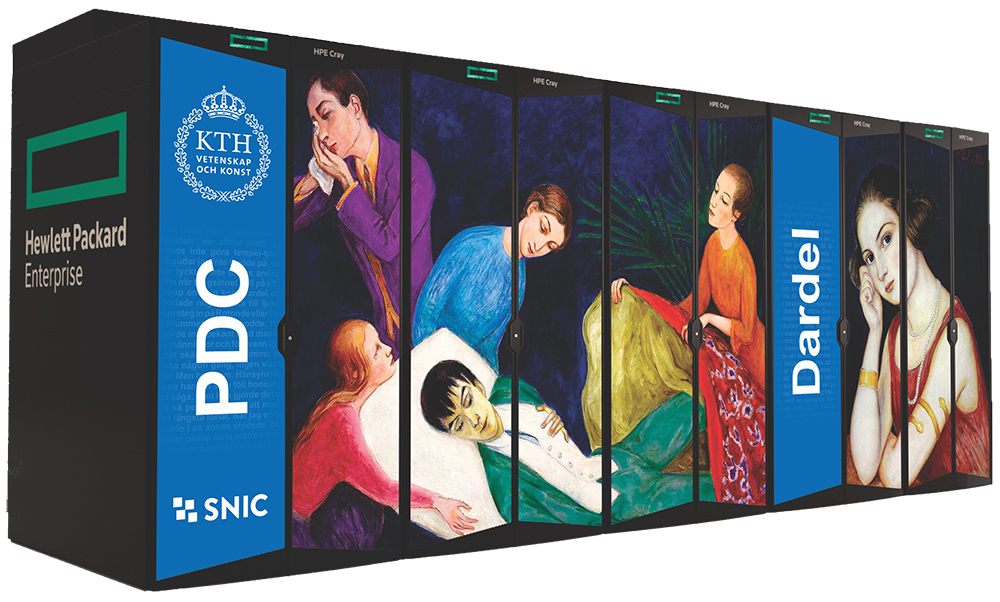Dardel, the supercomputer which would also hold its ground in a gallery

Dardel, the supercomputer which would also hold its ground in a gallery
Phase 1 of Dardel, the latest Swedish supercomputer, has been delivered. After completing Phase II, the theoretical peak performance of the system will grow from a current performance of 2.28 petaflops to 13.5 petaflops, and consultations about a potential Phase III are already ongoing with the decision-makers of the Swedish National Infrastructure for Computing (SNIC).
Dardel is operated by the Stockholm-based KTH Royal Institute of Technology and is one of the first supercomputers which feature AMD Radeon Instinct next-gen MI200 GPUs, similarly to the exascale Frontier (Oak Ridge National Laboratory, USA) the pre-exascale LUMI (Finland) system of the EuroHPC, and the Australian Setonix infrastructure (Pawsey Supercomputing Center).
This HPE Cray EX system was named after a Swedish couple of artists, Nils (painter) and Thora Dardel (writer). The supercomputer itself also features one of the most famous postimpressionist paintings painted by Nils in 1918 – during the Spanish flu pandemic – and entitled “The dying dandy”. A hundred years later, again during a pandemic, the name-givers used this gesture to underline their appreciation for the healthcare workers and sympathy for the mourners, and also remind us of the huge contribution of supercomputers in the fight against diseases. A portrait of Thora is also present on the machine now, and the texts in the background of the blue panels are from the book written by Thora about Nils, which puts the machine on a complex cultural mission as well.
As regards numbers, Dardel weighs 18 tons on a footprint of 13 square meters, i.e., it is heavier than 8 Volvo XC90 cars together. It contains more than 3 kilometres of cables and could store 2.4 million HD-quality movies. If each of the 10 million Swedish citizens performed a calculation, it would take a little more than 43 years until their performance would be equal to what Dardel can do in a single minute.
The installation of Phase I of the system, which comprises a CPU partition ensuring 70.912 CPU cores and a storage device, started in August 2021, and five research teams were testing the infrastructure during the fall. The GPU partition is scheduled to be installed in March 2022, and 850 users already starting their migration can work on them from the summer of 2022.
Dardel will be available for academic, commercial, and industrial research. The main fields of application include basic research, climate and weather models, materials science, energy and engineering sciences, process design, as well as bioinformatics and brain research; but of course, other fields of science can also have great expectations because operators also encourage users to “Think big and ask for machine time on Dardel”.
(Source of the photo: https://www.pdc.kth.se/)

